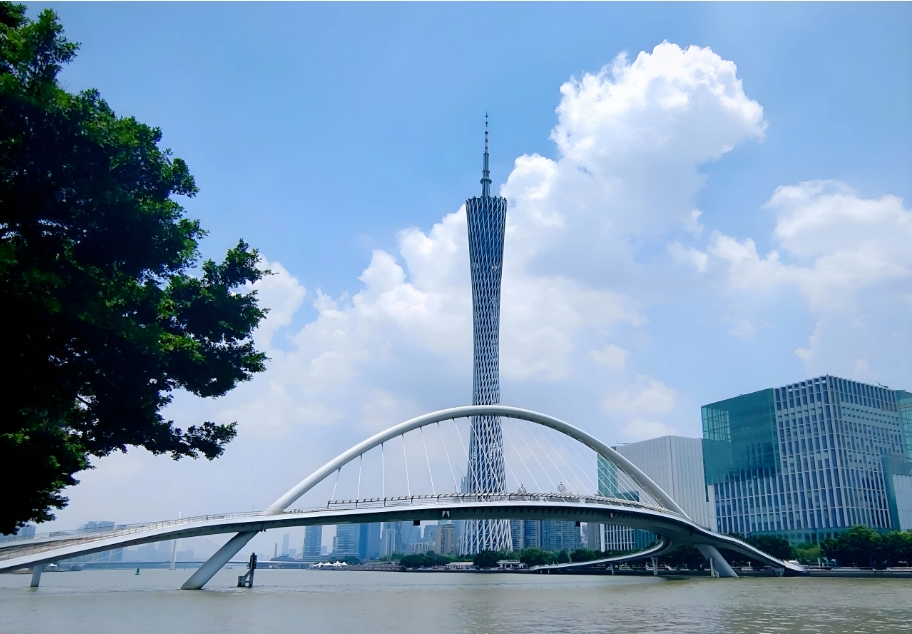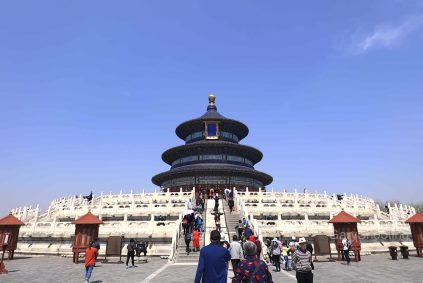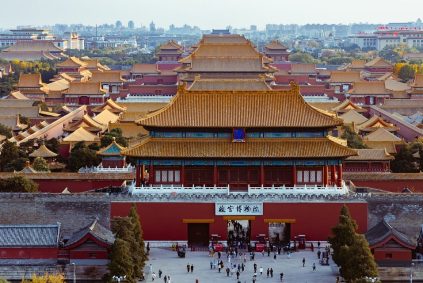Classic Dim Sum: The Soul of Guangzhou’s Morning Culture
Guangzhou’s dim sum culture is deeply rooted in history, with steamer baskets and teapots forming the city’s morning rhythm. Traditional dim sum houses prioritize freshness and craftsmanship. Shrimp dumplings (har gow) are a must-try, featuring translucent wrappers made from wheat starch and tapioca flour, stuffed with whole shrimp for a burst of sweetness. Steamed rice rolls (cheong fun) showcase another level of skill—thin rice batter is steamed into silky sheets, then rolled with fillings like beef, shrimp, or char siu, and drizzled with soy sauce and sesame oil. For a savory-sweet contrast, try barbecued pork buns (char siu bao), where fluffy dough encases honey-glazed pork with a caramelized crust.
Tea Pairing Traditions
Dim sum is inseparable from tea, with choices reflecting regional preferences. Chrysanthemum tea offers a floral, cooling note, while pu’erh’s earthy depth cuts through greasy dishes. Some venues follow the “one tea per person” rule, where diners select their brew to complement the meal’s flavors.
Hidden Gems in Old Districts
Venture into荔湾区 (Liwan District) for heritage-listed teahouses. These spots, often housed in Qing Dynasty buildings, serve dim sum alongside views of traditional岭南 (Lingnan) architecture. Opt for early morning visits to avoid crowds and witness chefs hand-rolling dumplings in open kitchens.
Street Food Adventures: From Boats to Night Markets
Guangzhou’s street food scene is a tapestry of flavors woven through centuries. 艇仔粥 (Ting Zai Jook), a porridge originating from riverboat vendors, combines fish slices, squid, and crispy fried dough in a rice-based broth. The secret lies in its layered texture—soft rice grains contrast with chewy seafood and crunchy toppings. For a modern twist, some stalls add avocado or truffle oil, though purists insist on the classic recipe.
Night Market Nirvana
As dusk falls, 花都夜市 (Huadu Night Market) transforms into a culinary carnival. Stalls here specialize in 炭炉牛杂 (Charcoal-Braised Beef Offal), where tripe, tendons, and intestines simmer for hours in a spiced broth until tender. Diners customize their bowls with chili sauce, pickled vegetables, and herbs, creating a personalized flavor explosion. Another crowd favorite is 生煎包 (Sheng Jian Bao), pan-fried buns with a crispy bottom and juicy pork filling, often eaten with black vinegar for acidity.
Coastal Influences
Head to 南沙区 (Nansha District) for seafood-centric street eats. Stalls near the harbor serve 蒸河鲜 (Steamed River Fish), using locally caught species like snakehead or catfish. The fish is seasoned simply with ginger, scallions, and soy sauce, allowing its natural sweetness to shine. Pair it with 濑粉 (Lai Fun), thick rice noodles stir-fried with shrimp paste and bean sprouts for a smoky, umami-rich dish.
Regional Specialties: From Mountains to Seaside
Guangzhou’s culinary diversity extends beyond its urban core, with each district offering unique specialties. 增城 (Zengcheng) is renowned for its 荔枝宴 (Lychee Feast), a seasonal menu featuring the fruit in savory and sweet preparations. Dishes like lychee-stuffed chicken and lychee-infused soup highlight the ingredient’s floral aroma and delicate sweetness.
Hillside Flavors
In 从化区 (Conghua District), 吕田焖大肉 (Lü Tian Braised Pork) reflects mountainous traditions. This dish uses fatty pork belly braised with dark soy sauce, star anise, and rock sugar until the meat is fork-tender. The sauce’s richness is balanced by pickled mustard greens served on the side, adding a tangy crunch.
Islander Delicacies
The islands off 番禺区 (Panyu District) are famous for 黄油蟹 (Butter Crab), a rare variety of green crab with golden roe that melts into a creamy sauce when steamed. Locals recommend pairing it with 姜葱炒蟹 (Ginger-Scallion Stir-Fried Crab), where fresh crab is tossed in a wok with aromatic ginger, garlic, and soy sauce, creating a caramelized glaze.
Time-Honored Techniques: The Art of Slow Cooking
Guangzhou’s chefs take pride in preserving culinary traditions that demand patience. 老火靓汤 (Old-Fire Soups) are simmered for 4–8 hours using ingredients like dried scallops, Solomon’s seal rhizome, and pork bones. Each recipe follows seasonal principles—cooling melon soups in summer, nourishing black chicken soups in winter.
Bamboo-Pressed Noodles
The making of 竹升面 (Zhu Sheng Mian), or bamboo-pressed noodles, is a physical art. Chefs ride a large bamboo pole over a mound of dough, using their body weight to flatten it into paper-thin sheets. The noodles are then boiled briefly and tossed in a light sauce or soup, retaining a chewy texture that pairs perfectly with cloud ear mushrooms and lean pork.
Clay Pot Rice
煲仔饭 (Bao Zai Fan), or clay pot rice, is a winter staple. Short-grain rice is cooked in a clay pot with sausages, chicken, or mushrooms, forming a crispy layer of guoba (rice crust) at the bottom. The dish is finished with a drizzle of sweet soy sauce and a raw egg, which cooks from the pot’s residual heat.
















